Abstract
Accurate measurements were made of the overall size of both the crown and its components of 91 mandibular premolar teeth of early hominids. The shape of the crown outline and the fissure pattern, and the expression of four morphological traits, were also recorded. Non-dental criteria were used to allocate the specimens into four major taxonomic categories (EAFROB, EAFHOM, SAFROB and SAFGRA), approximating to the hypodigms of, respectively, A. boisei, H. habilis and Homo sp., A. robustus and A. africanus. Those specimens that could not be so allocated were regarded as 'unknown'. Intertaxonomic overall size differences were established for both the P3 and P4, with the latter showing little overlap in crown size between the three taxonomic categories usually associated with East African sites (i.e. EAFROB, EAFHOM and SAFGRA). Crown shape is a better discriminator between taxonomic groups for P3 than for P4, with the P3s of EAFHOM showing less buccolingual expansion than the other taxonomic categories. Cusp number, the location of the lingual cusp and the expression of the median longitudinal fissure, show systematic variation between the main taxonomic categories, with the 'robust' taxa being distinguished by additional distal cusps, and a more deeply incised median longitudinal fissure, and EAFHOM being peculiar in having a distally situated lingual cusp. Marginal grooves show more overlap in their incidence and expression between taxonomic categories. Both the 'robust' australopithecine taxonomic categories have relatively large talonids, apparently at the expense of the size of the buccal cusp. The relative talonid enlargement was greater for P3 than for P4, a conclusion which is at variance with previous published assessments. Investigation of the allometric relationships between relative talonid size and overall crown size in the pooled 'non-robust' taxonomic categories did not suggest that talonid enlargement was a simple consequence of a larger-size crown. The results of multivariate analysis demonstrate that the absolute areas of the main cusps and the talonid provide marginally the more effective discrimination between the main taxonomic categories than do the relative areas of the cusp components. The removal of the simpler effects of overall size reduces the differences between taxa, but does not eliminate them. The data for the four taxonomic categories were used as a reference framework for the investigation of the affinities of those teeth in the unknown category for which detailed data were available.(ABSTRACT TRUNCATED AT 400 WORDS)
Full text
PDF
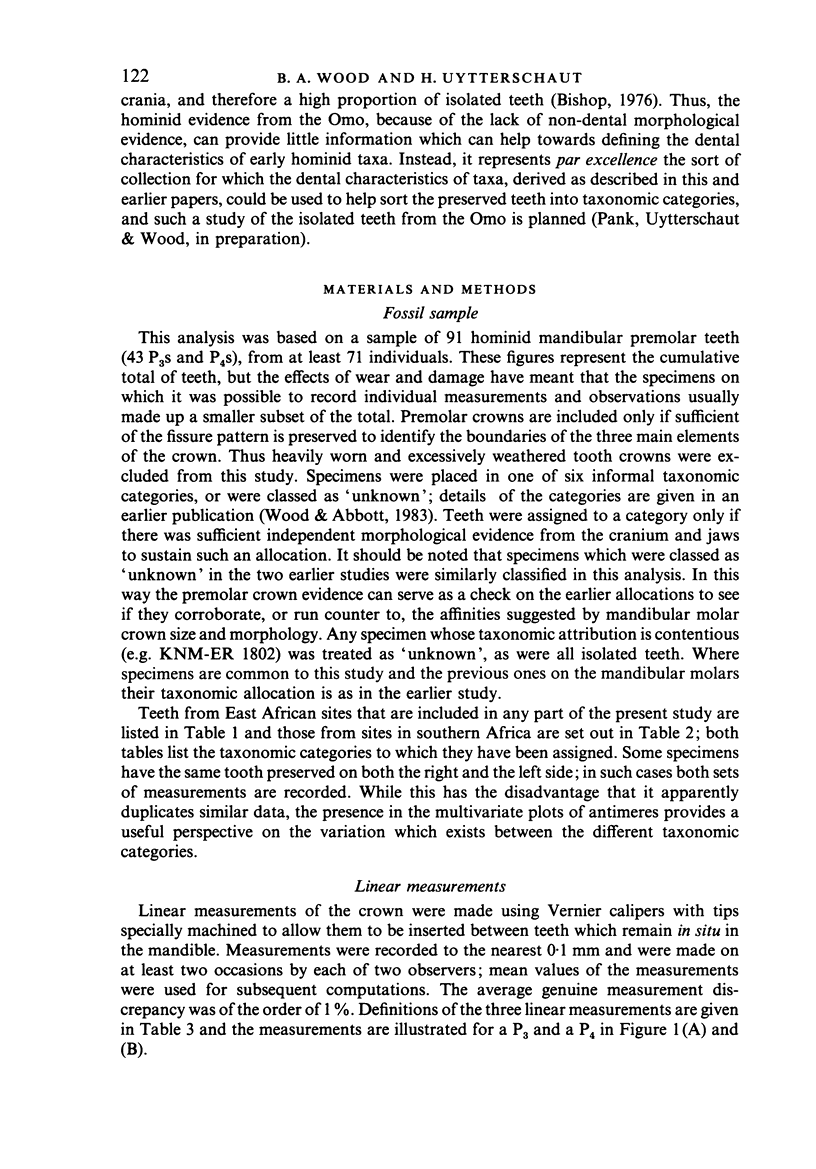
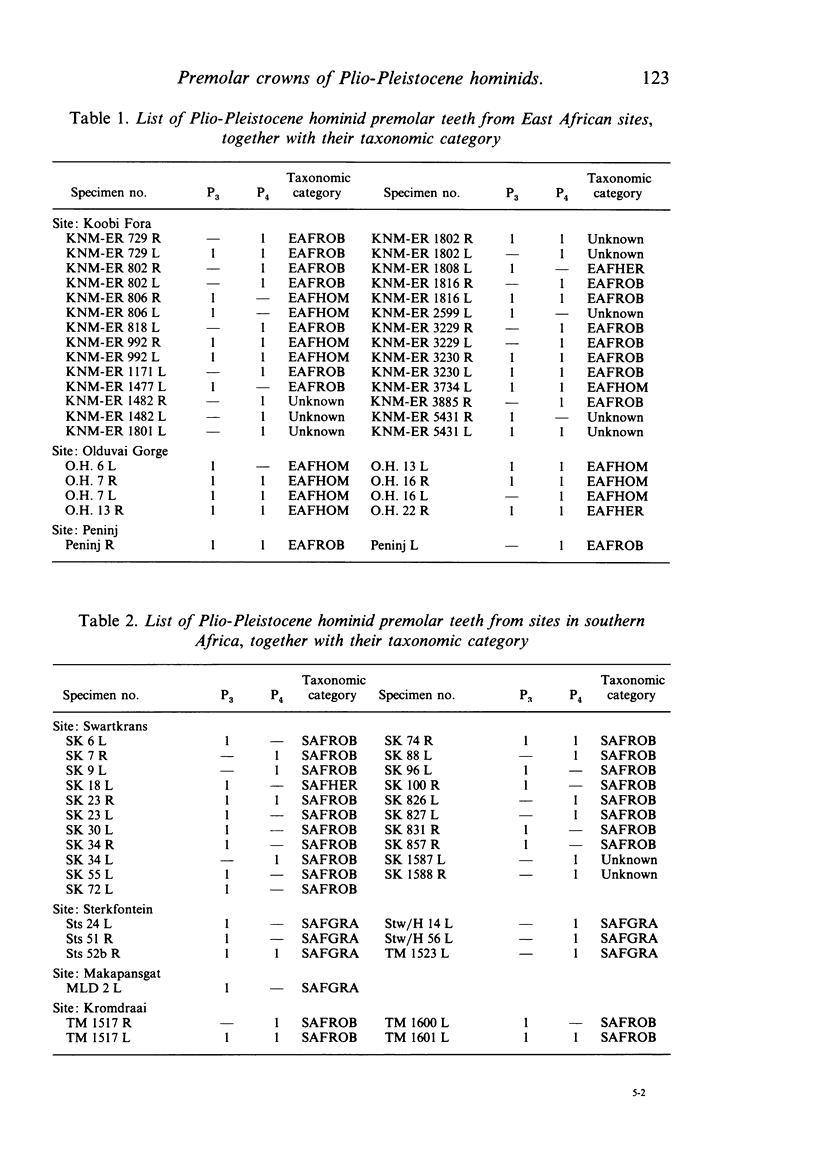
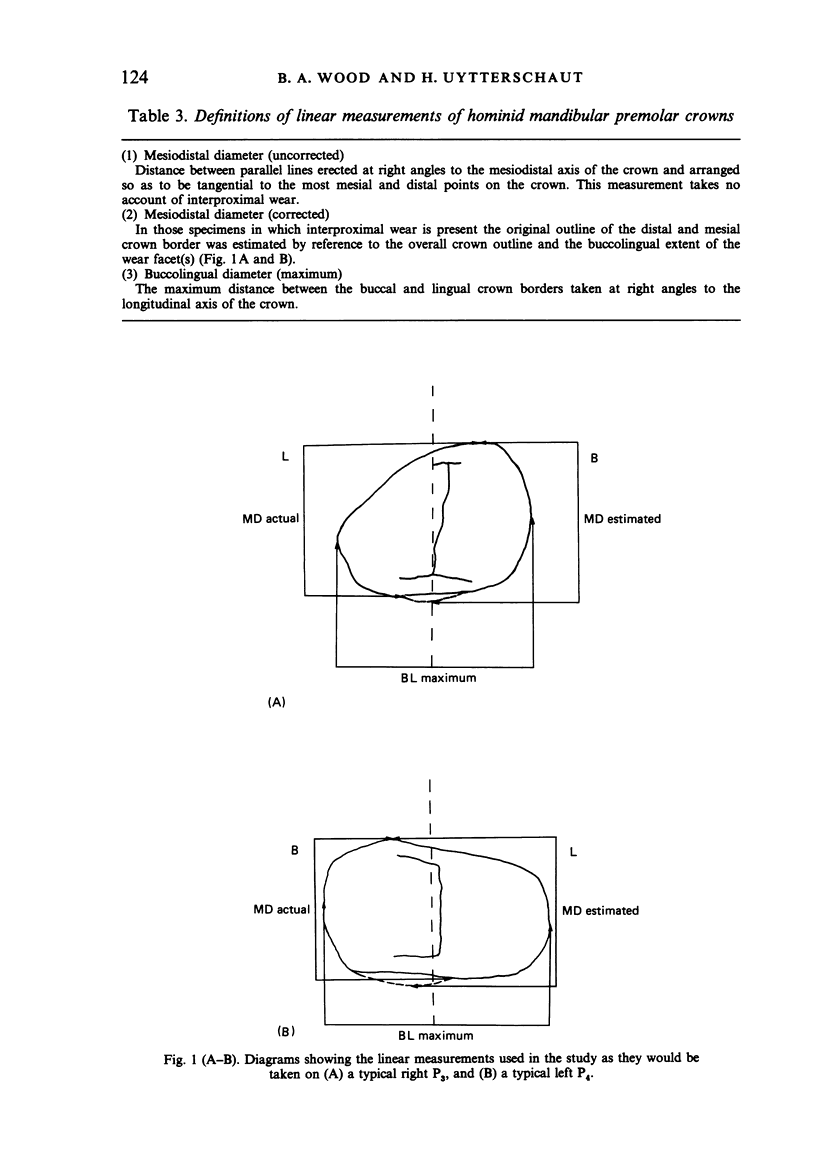
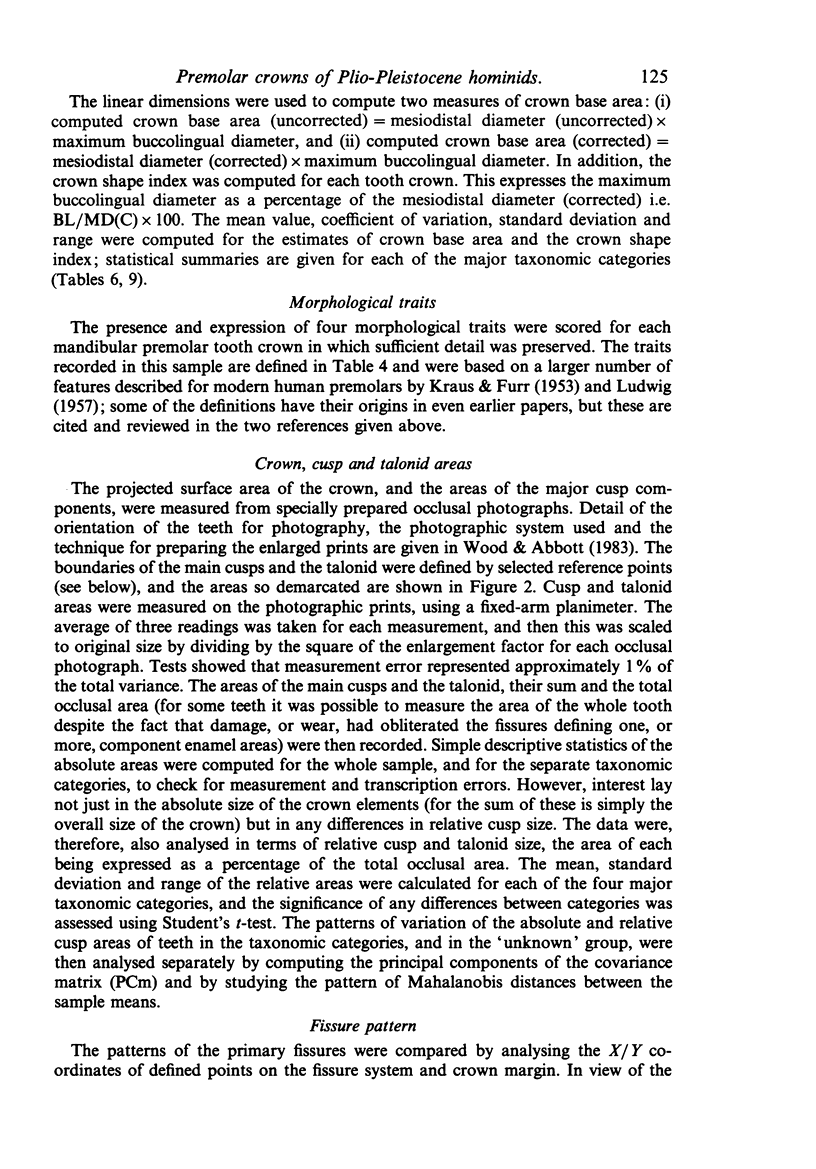
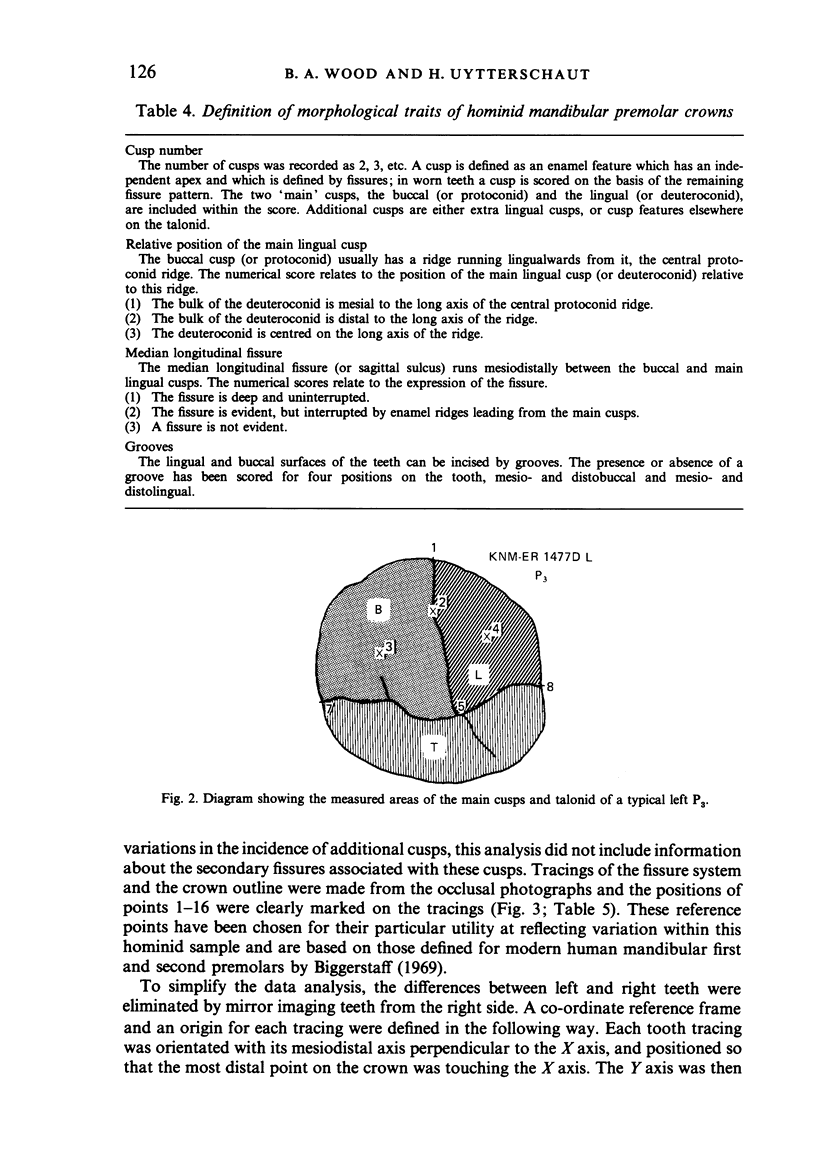
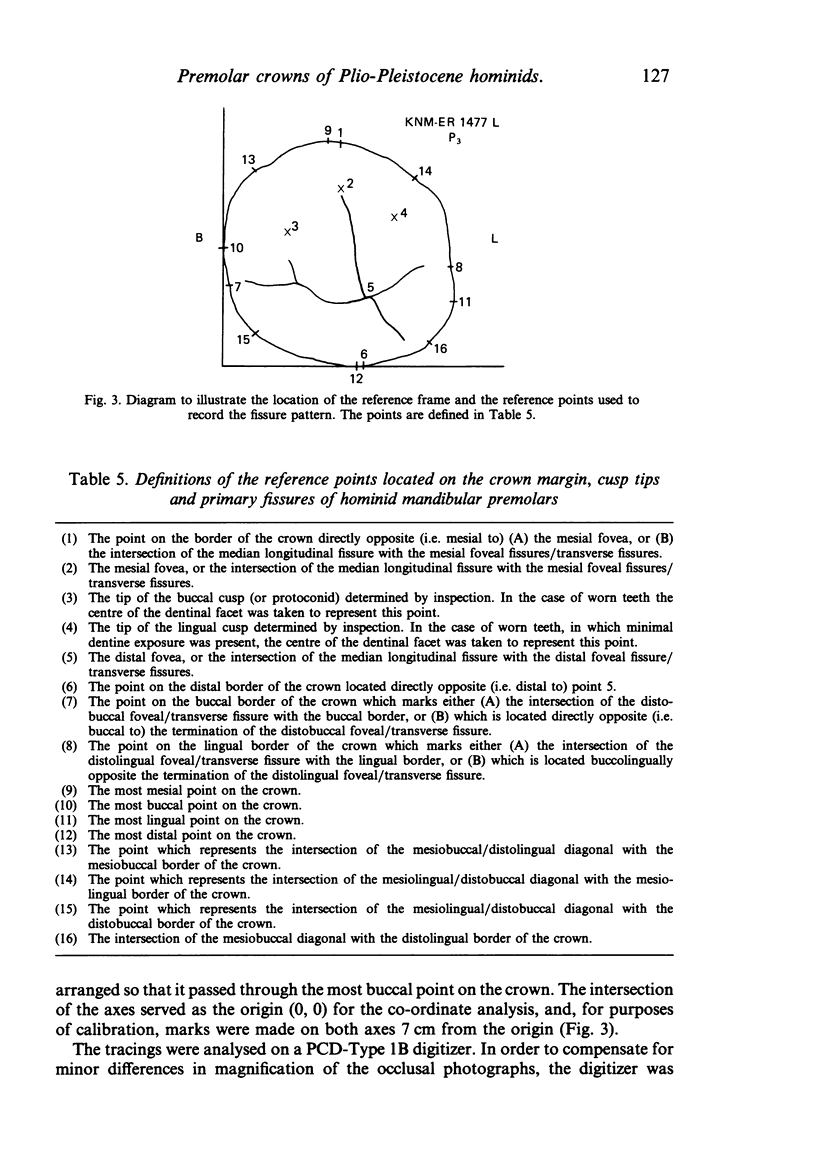
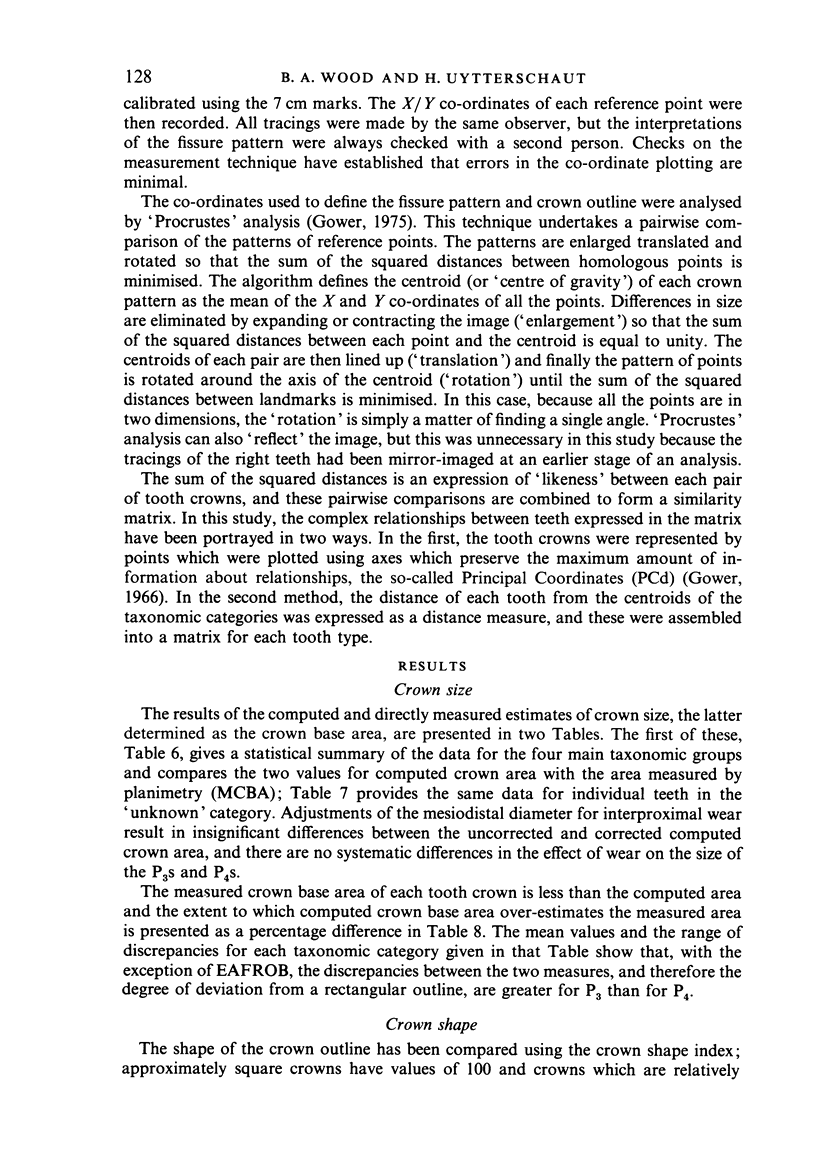
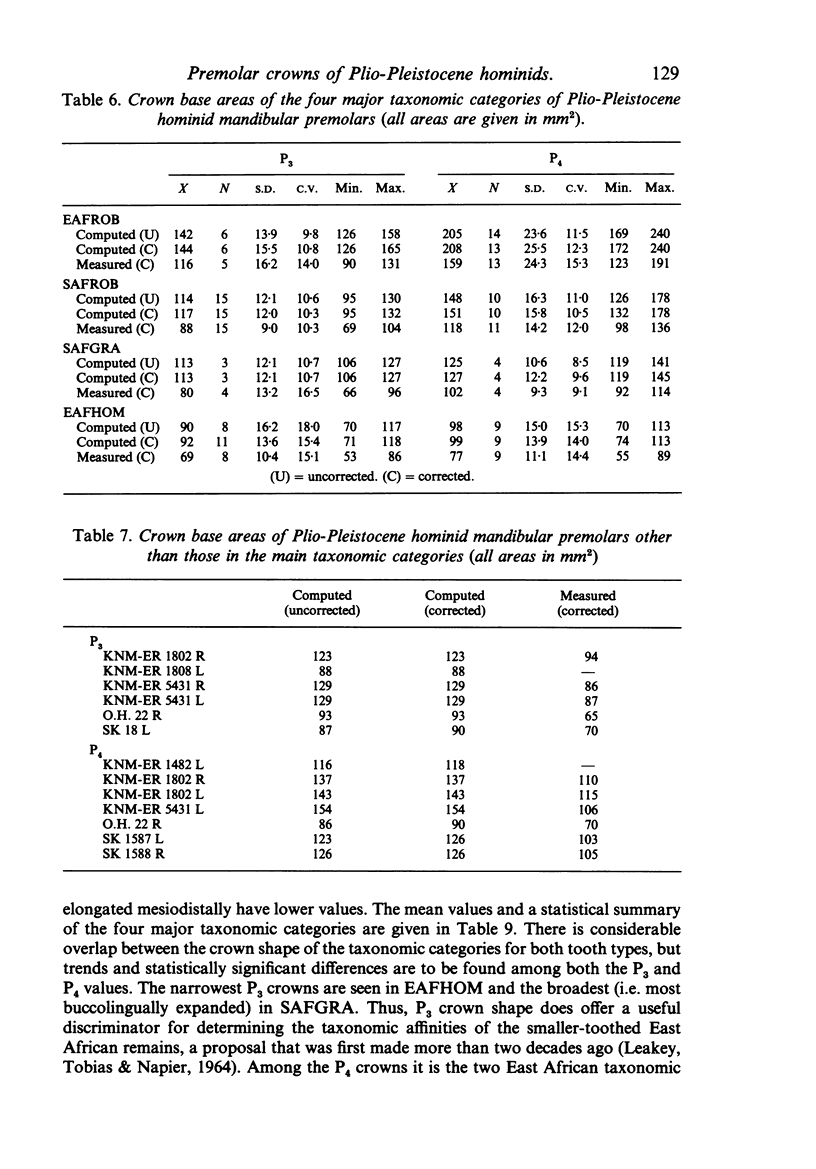
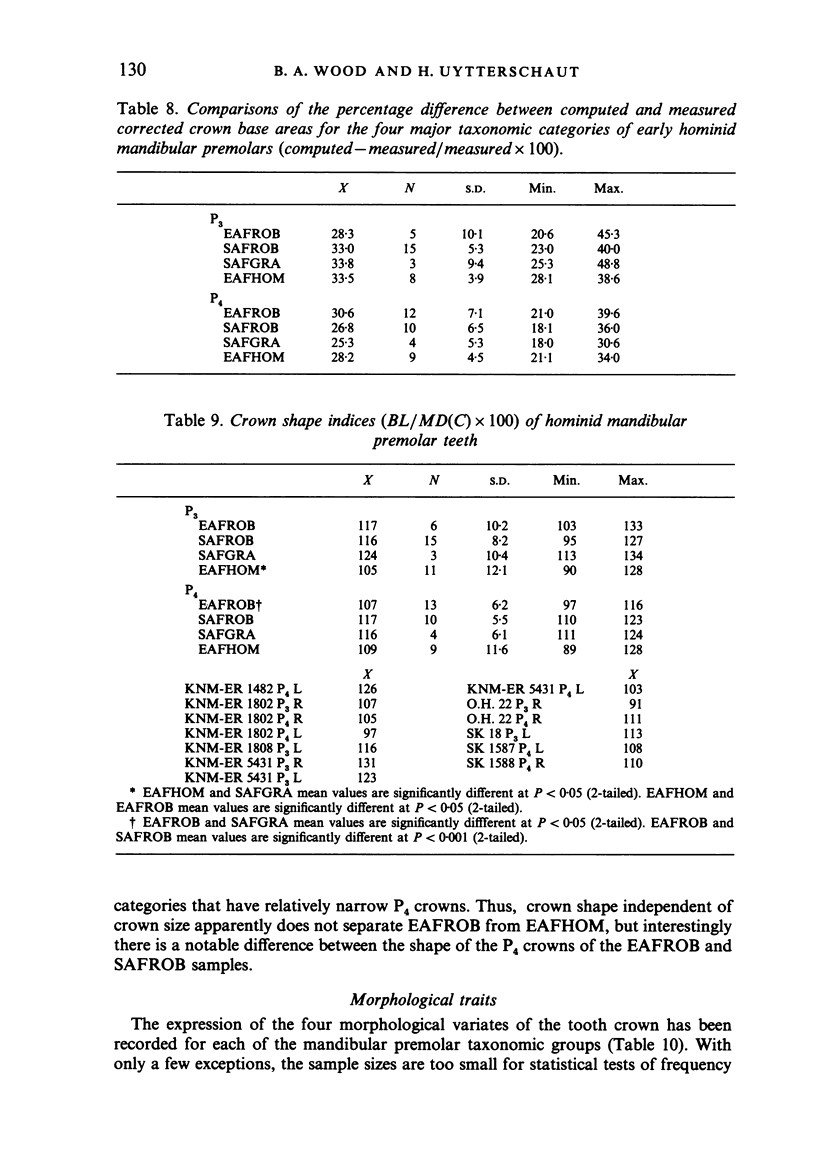
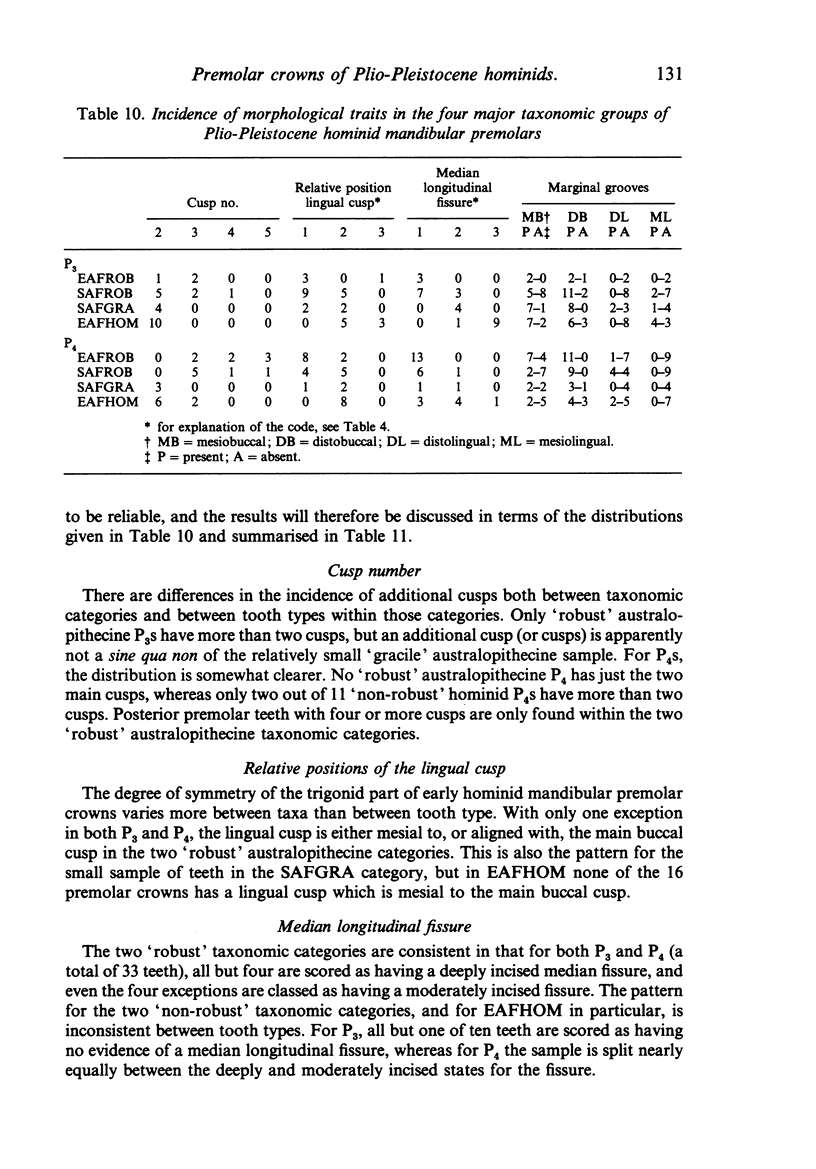
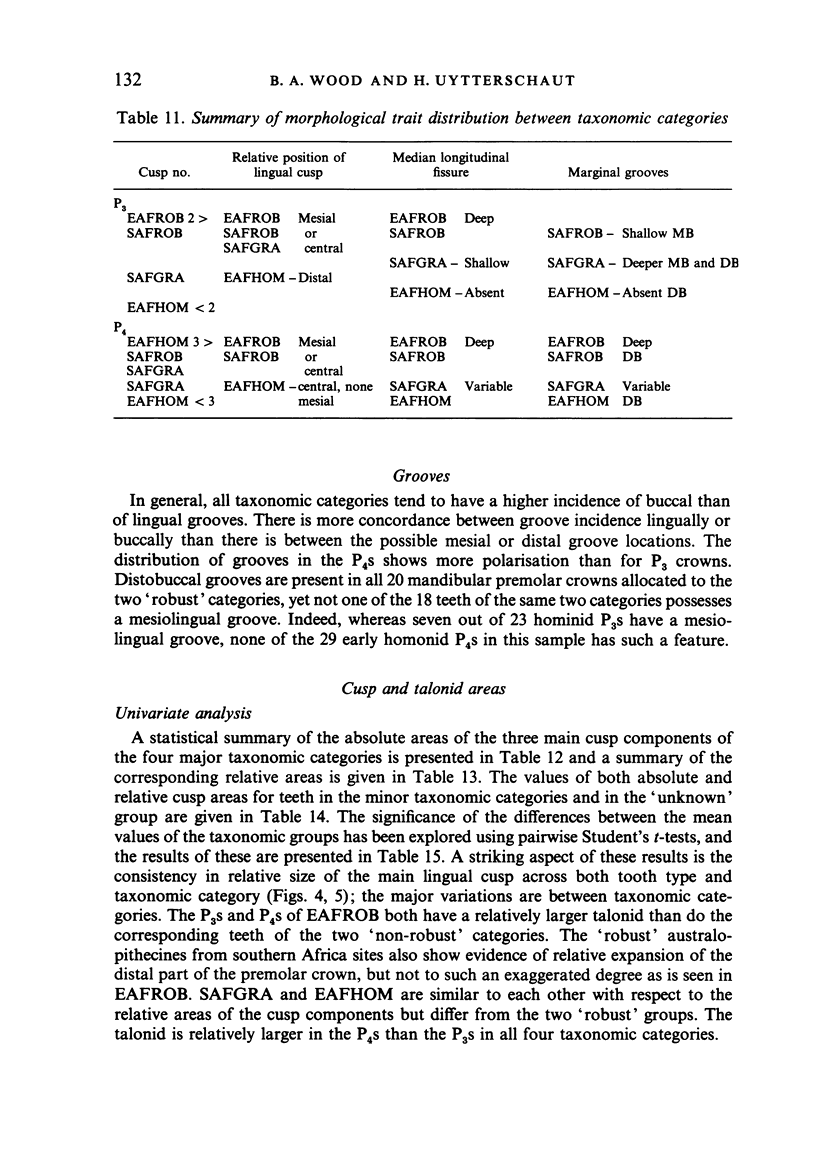
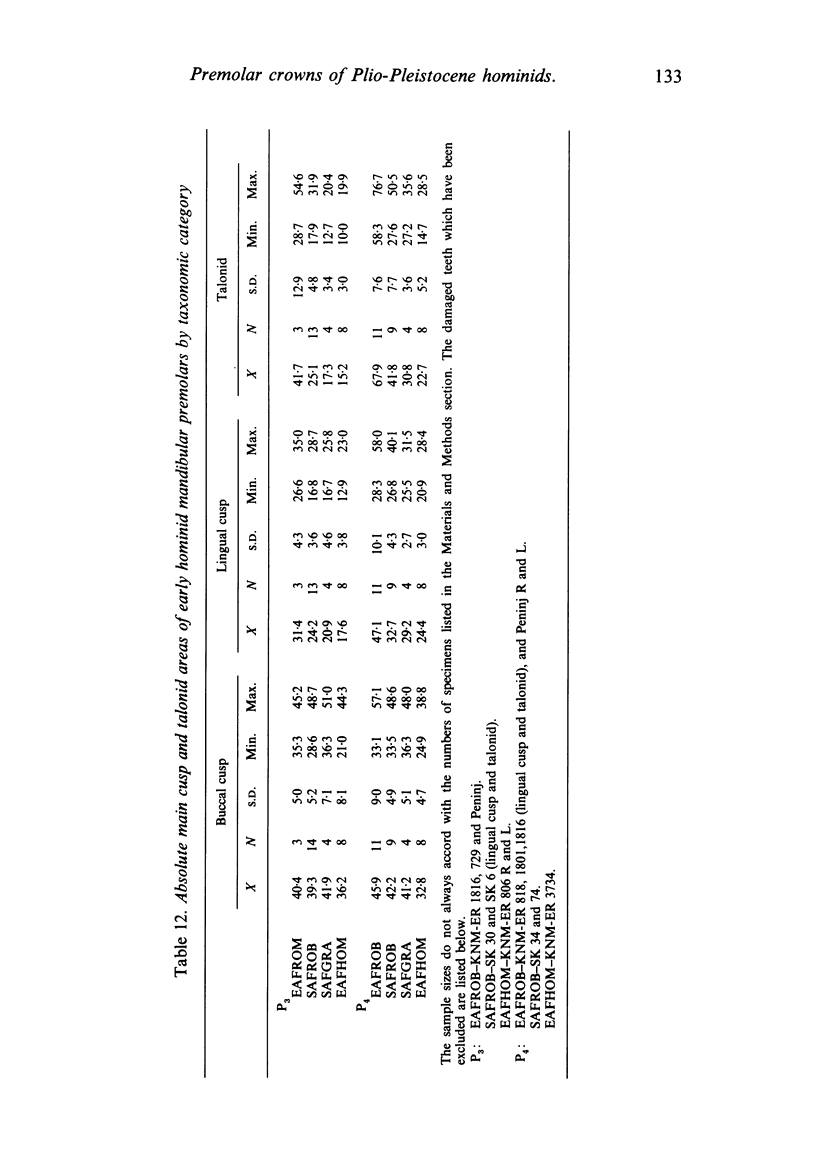

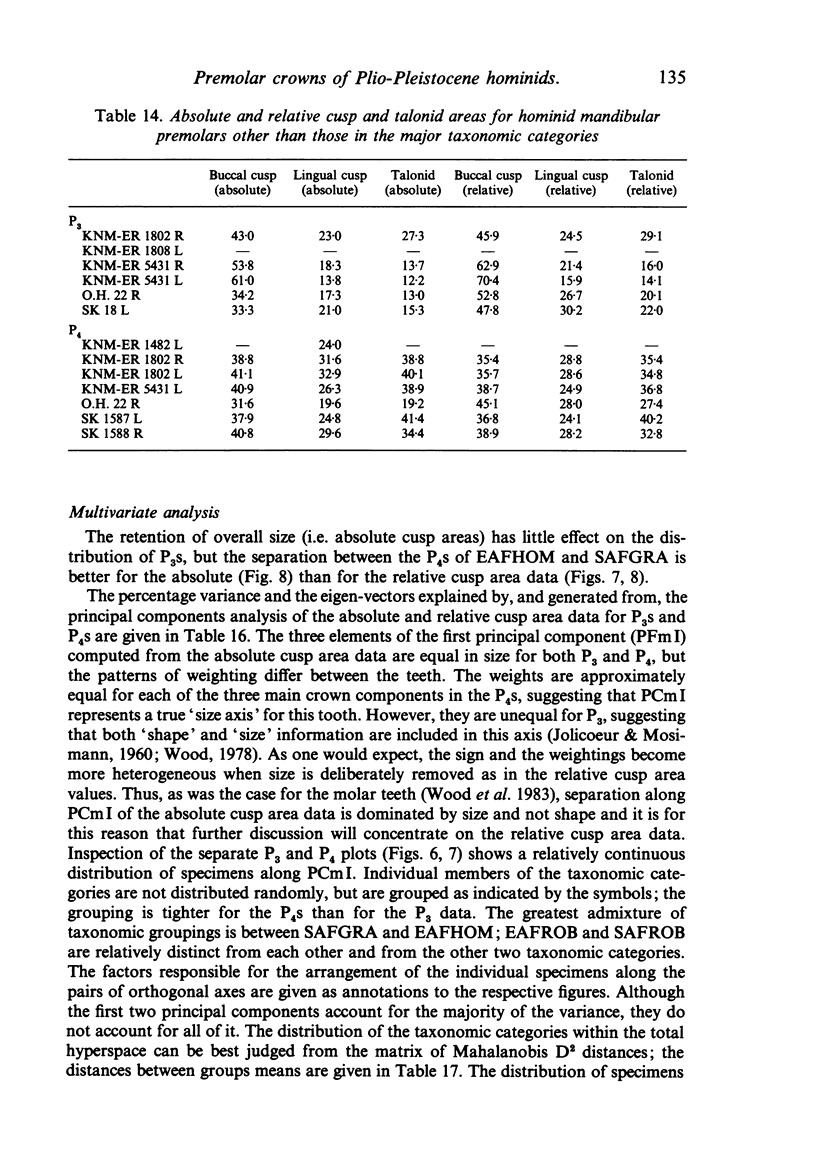
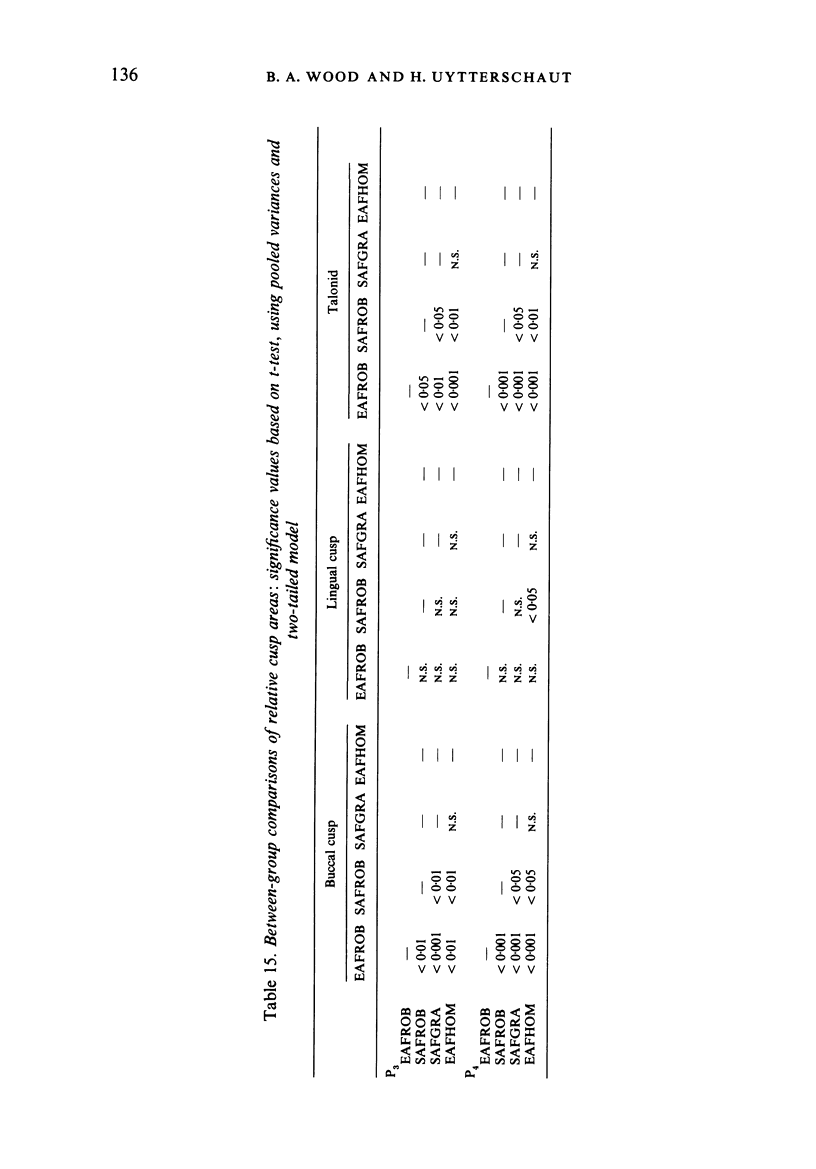

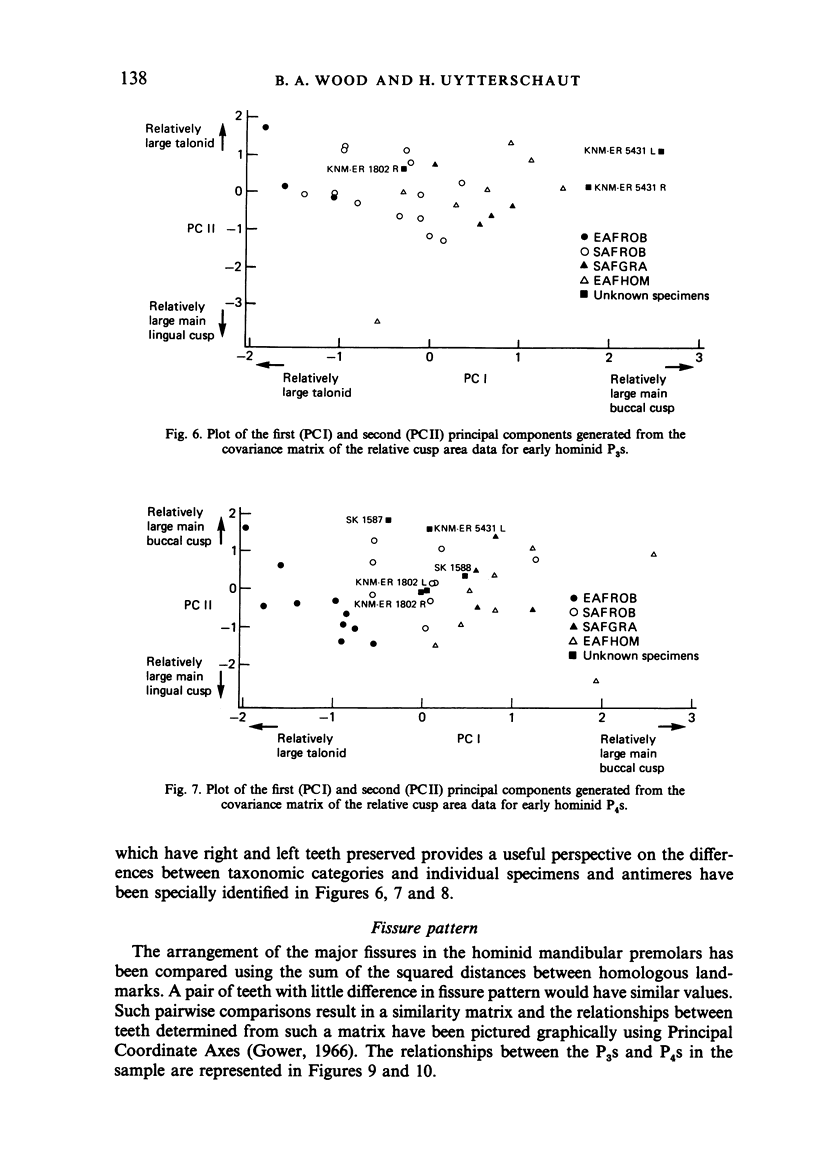
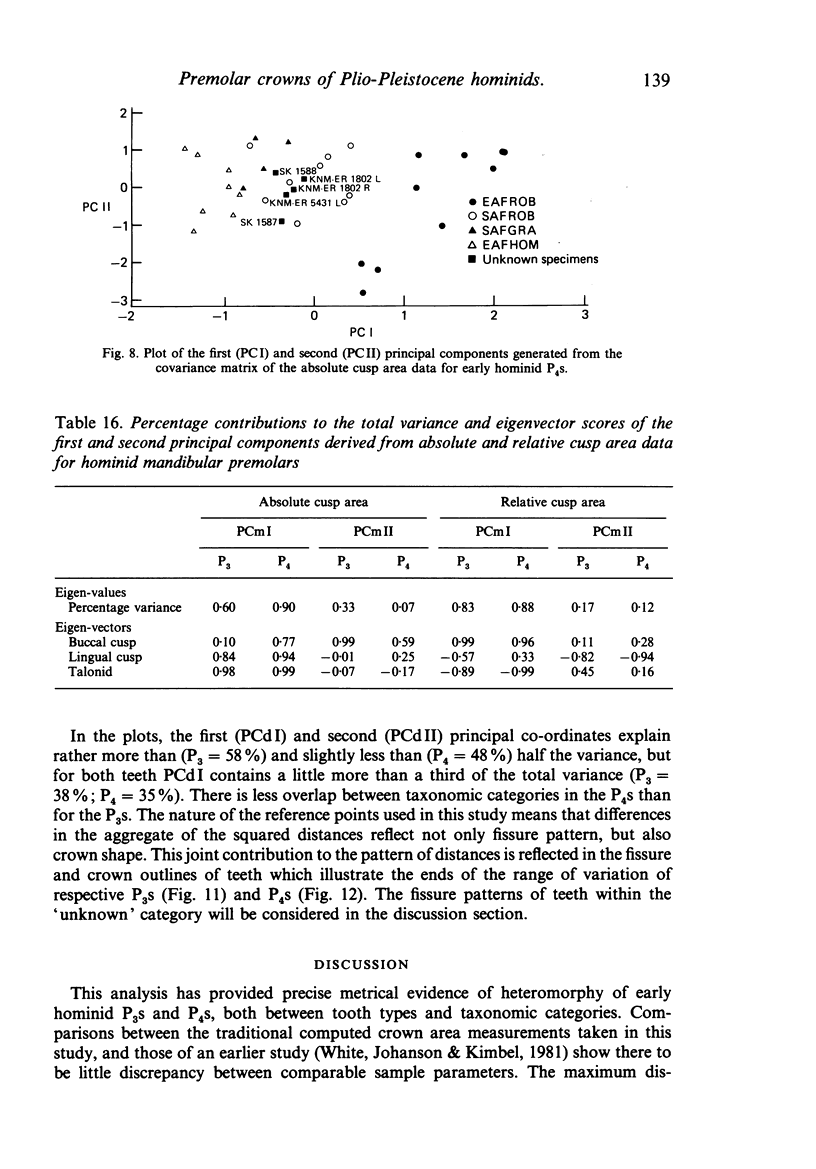
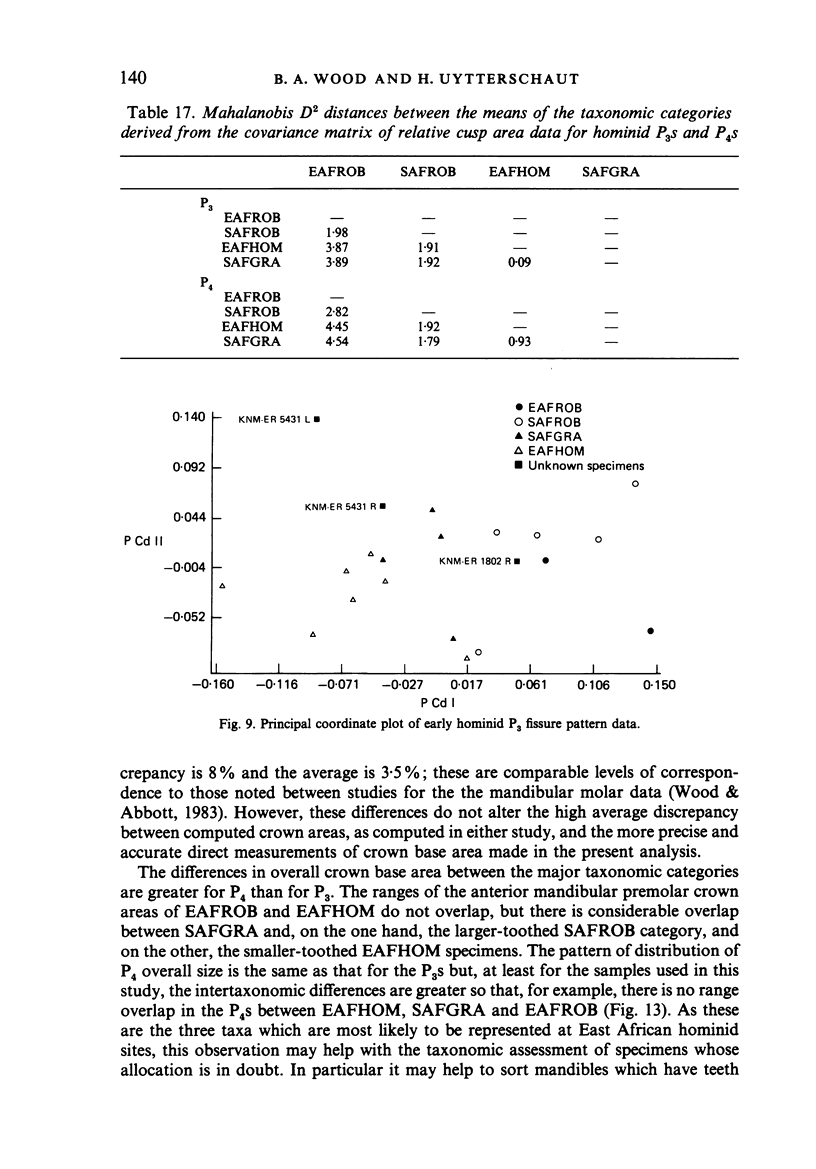
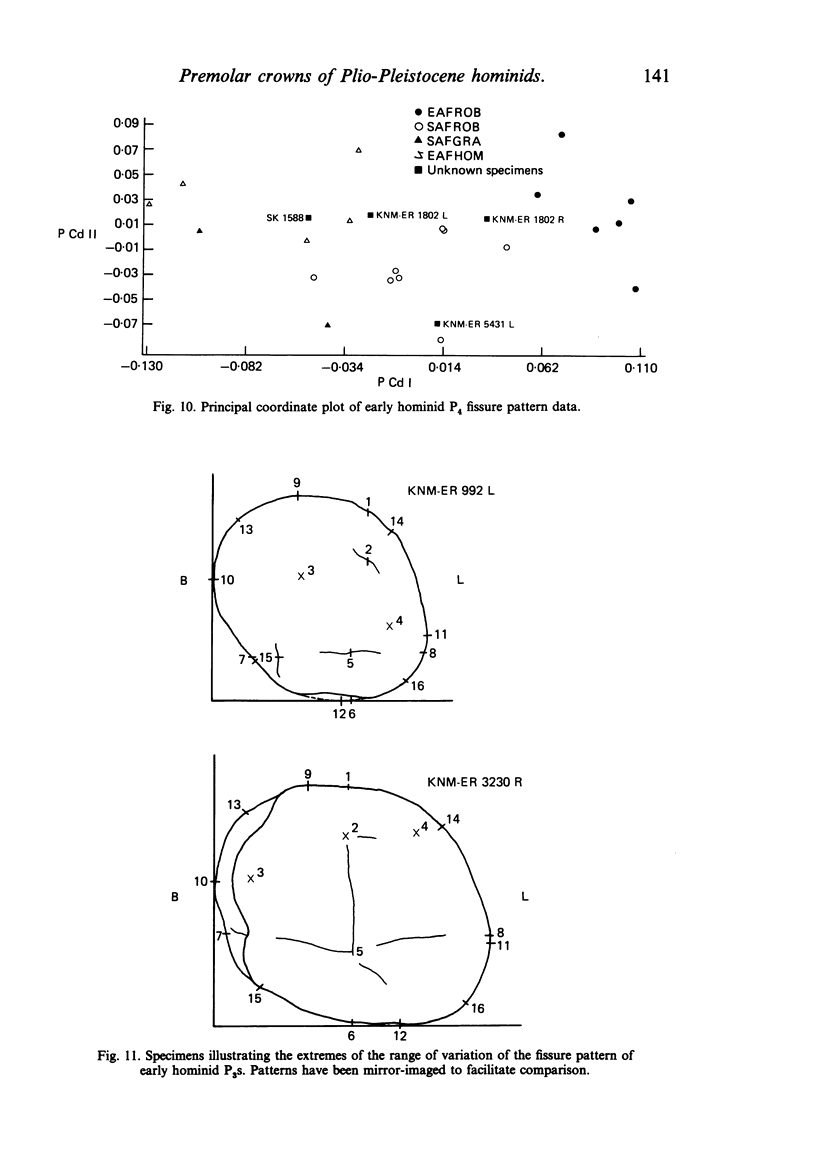
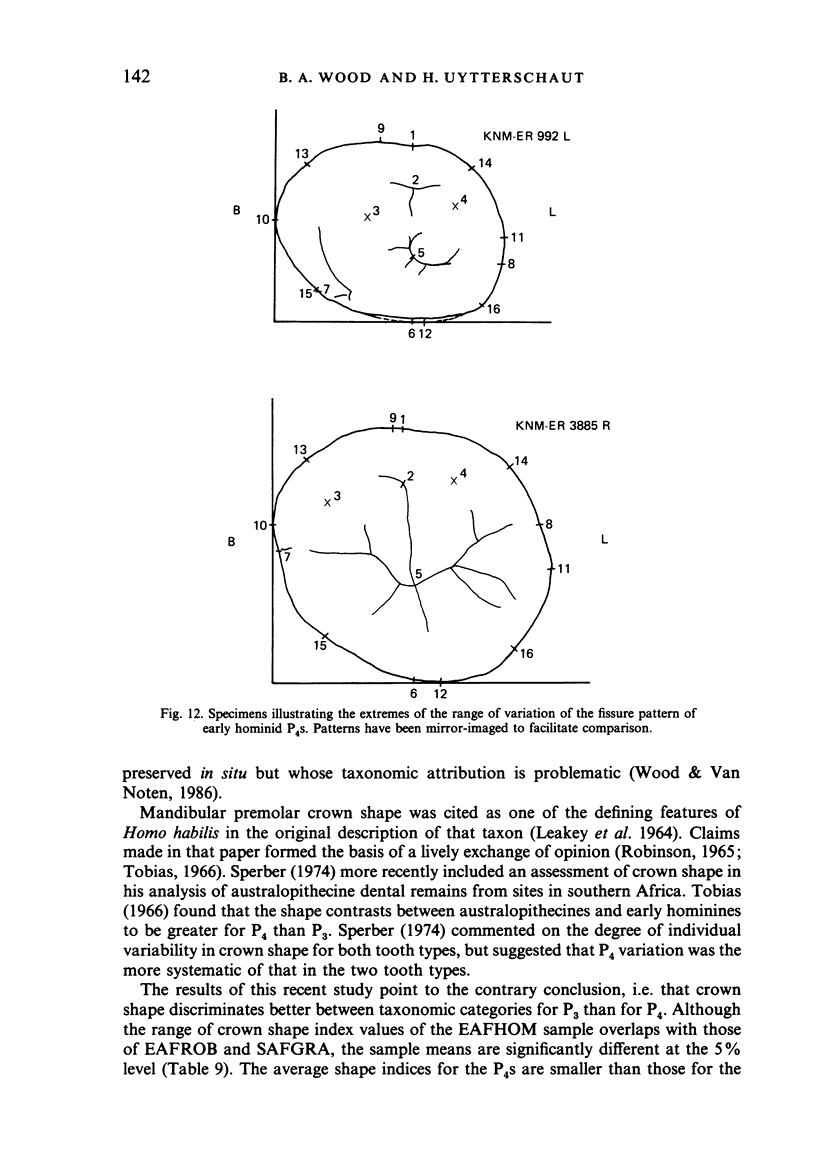
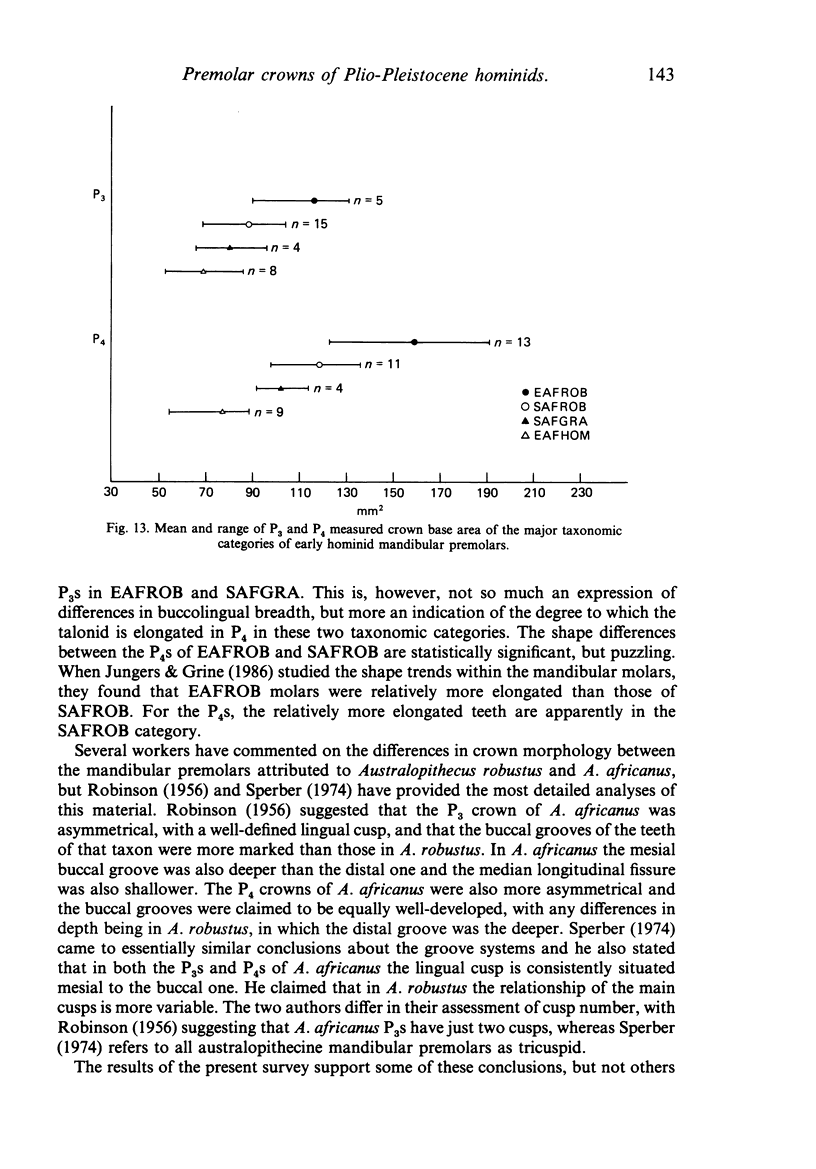
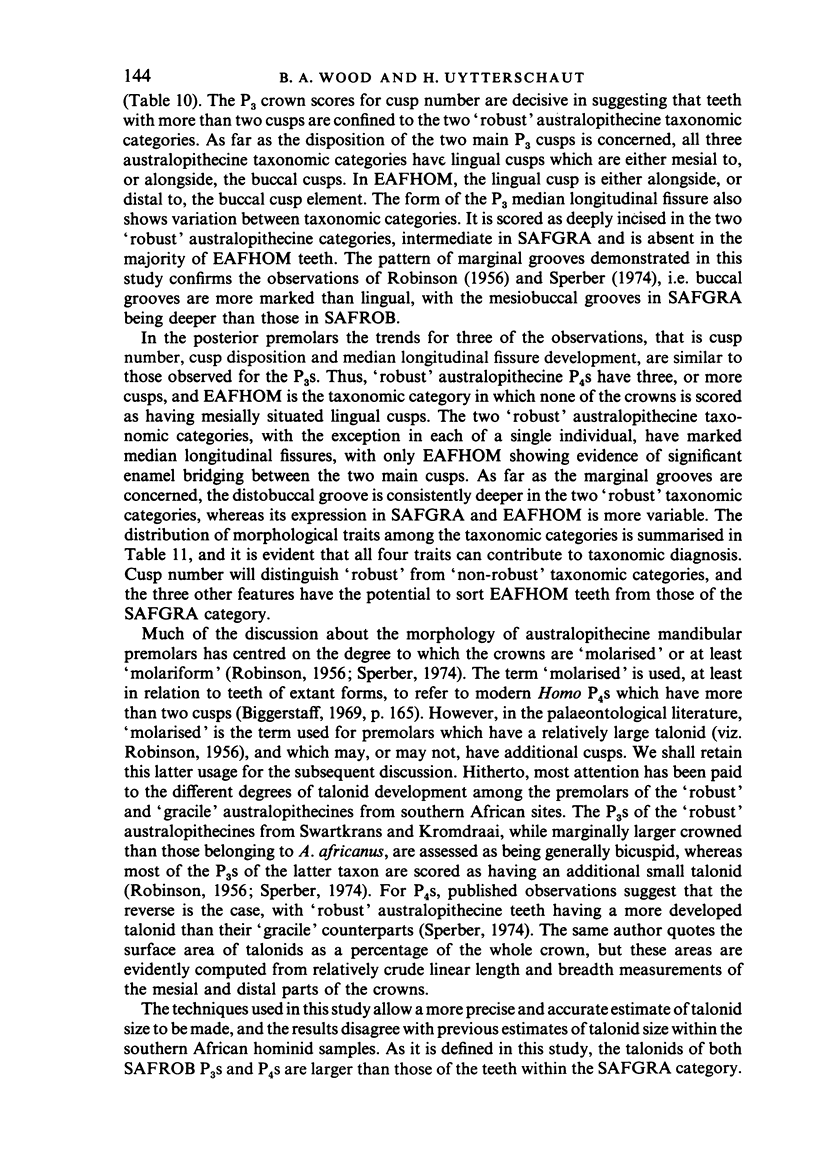
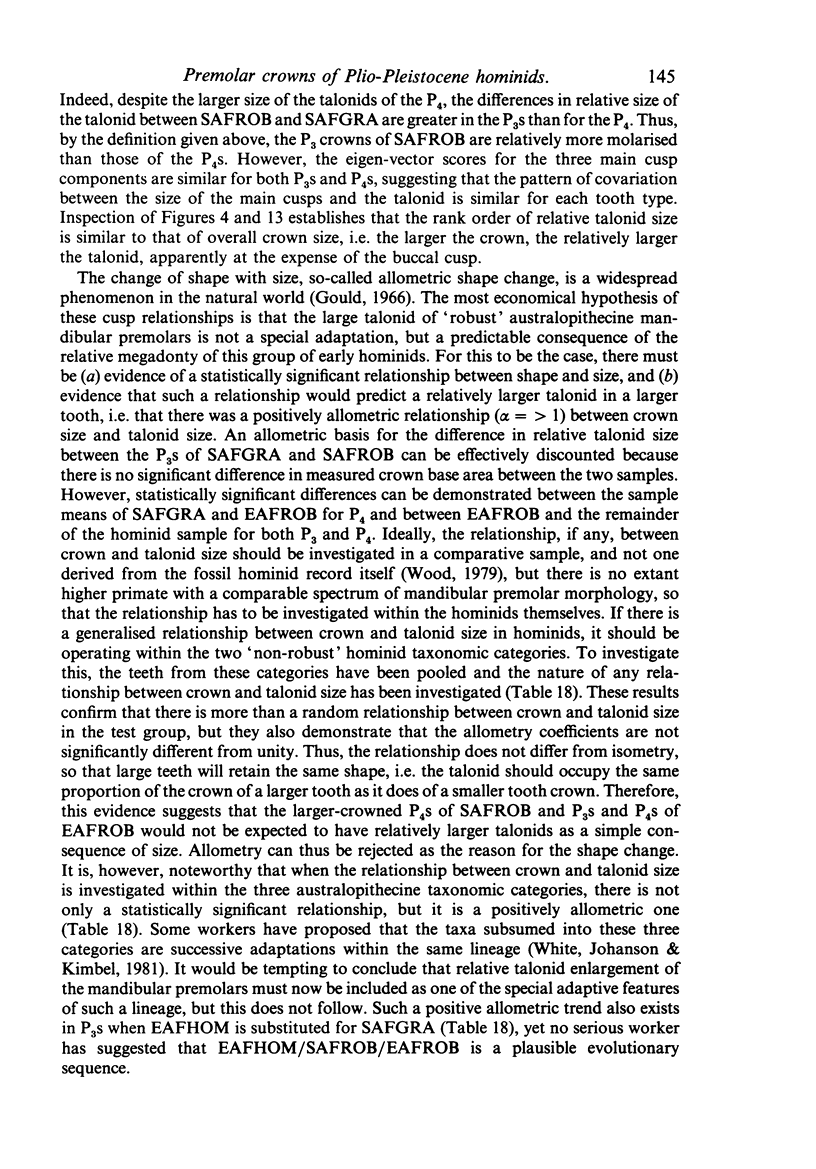
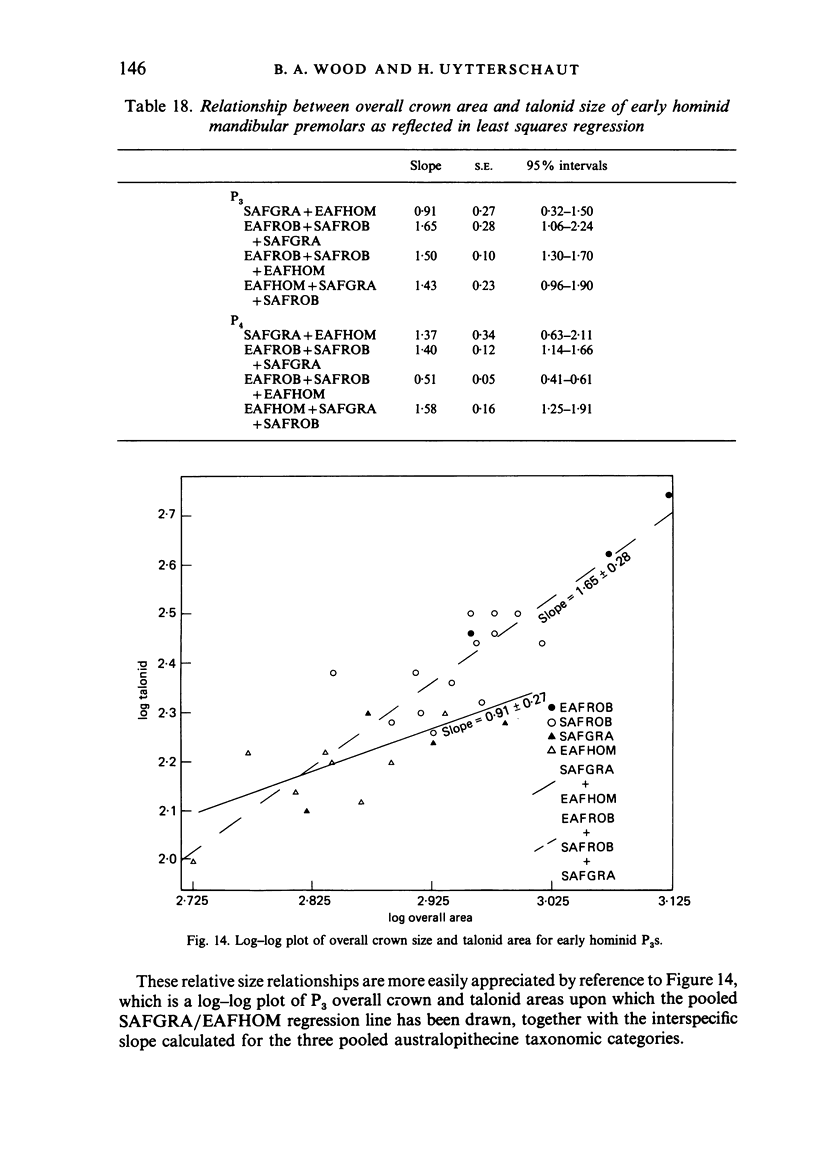
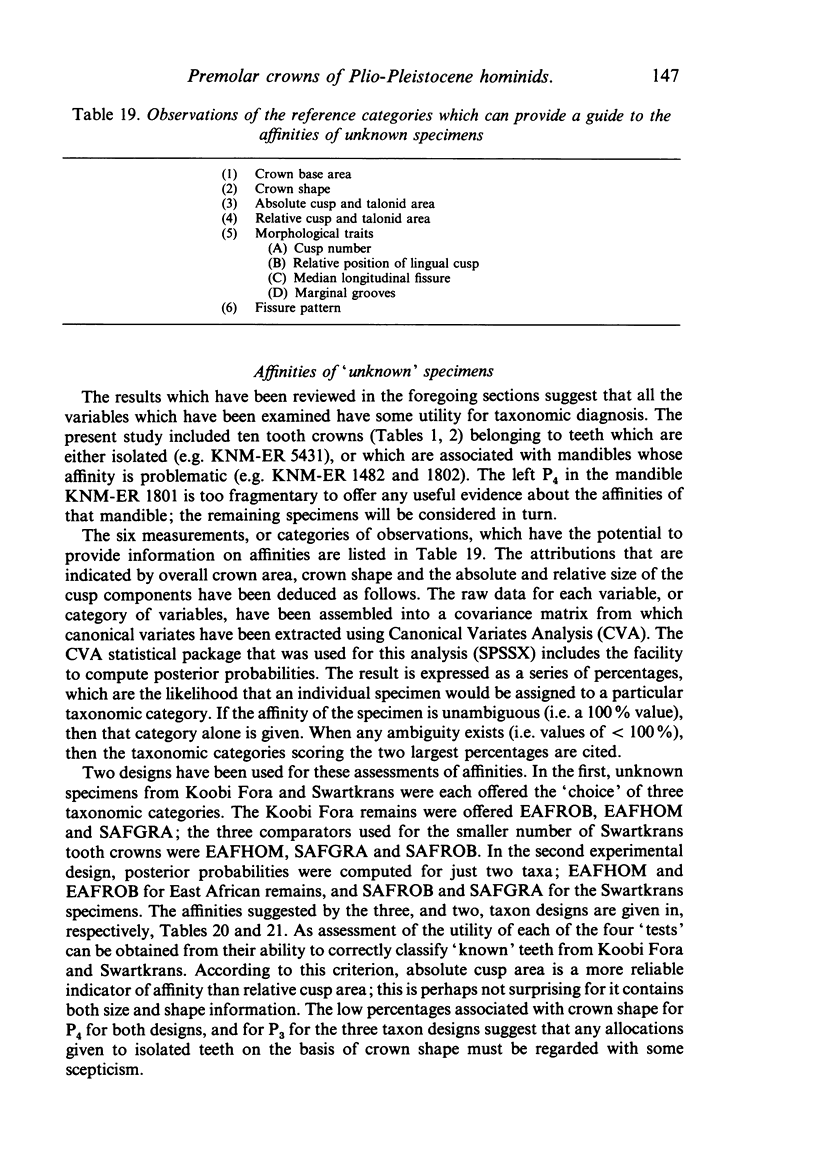
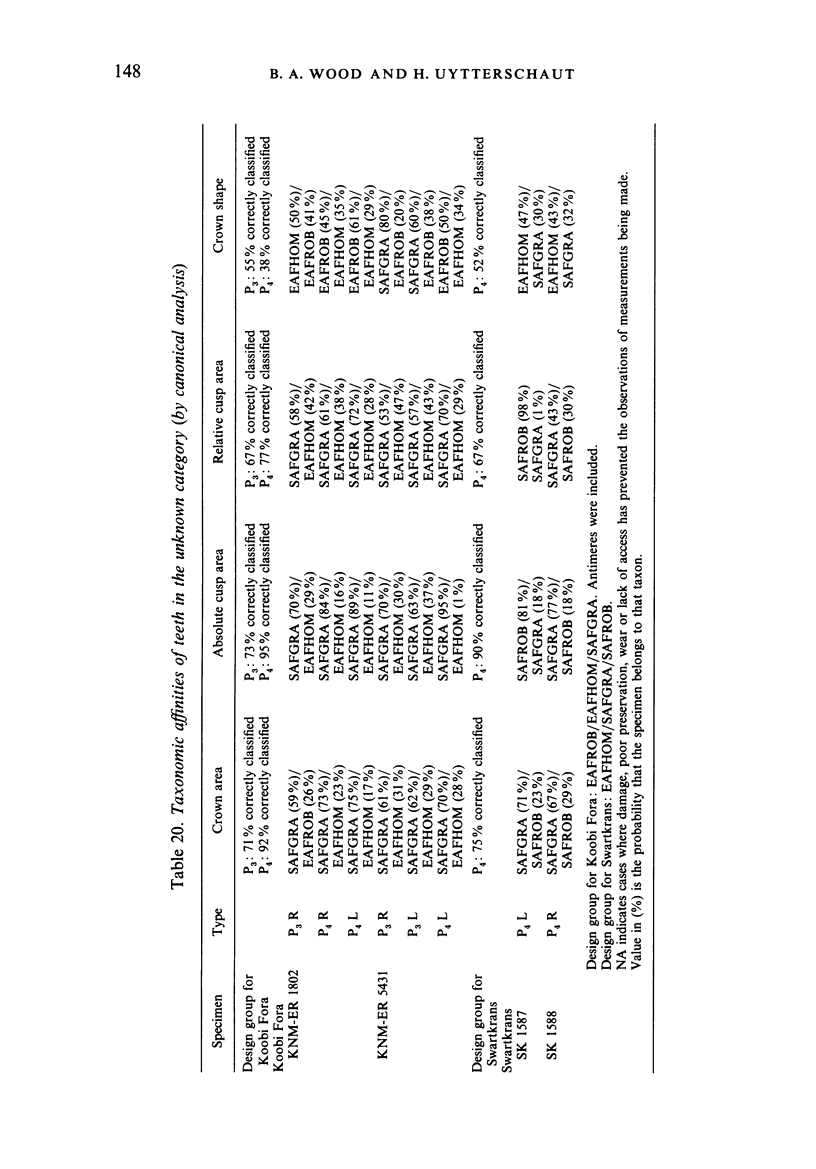
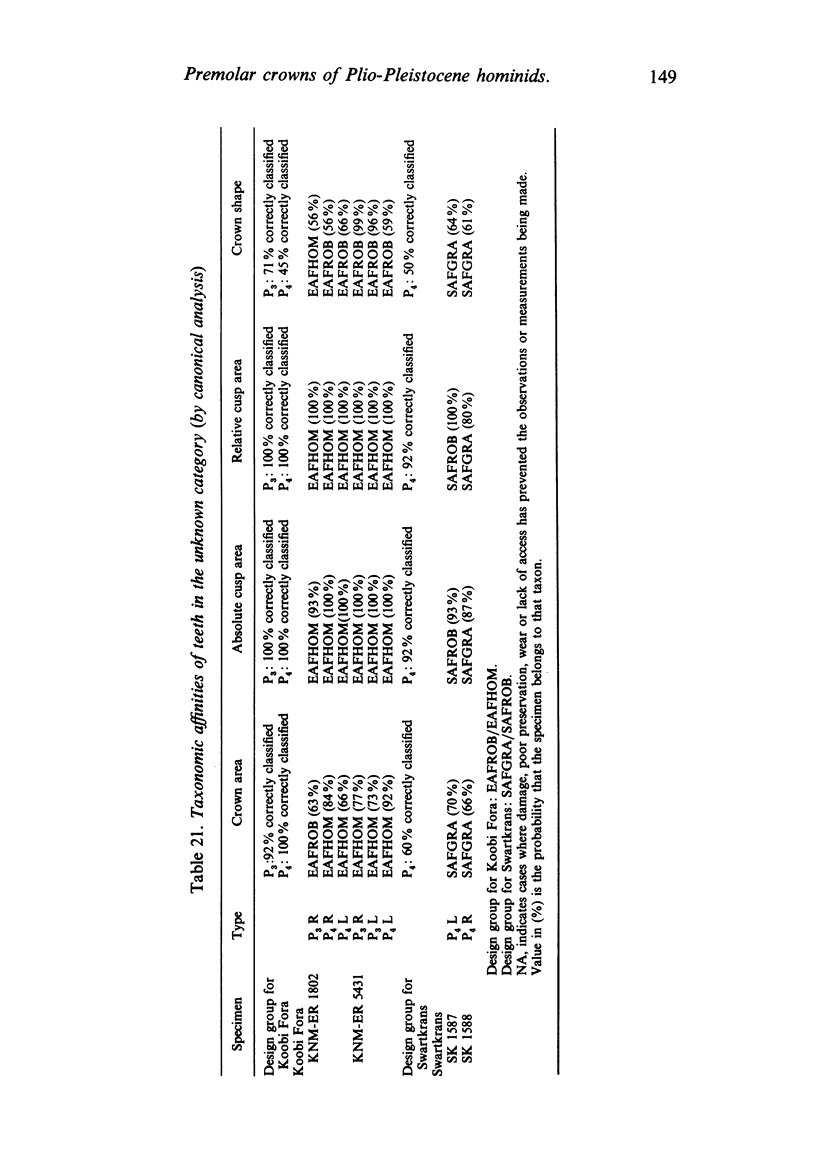
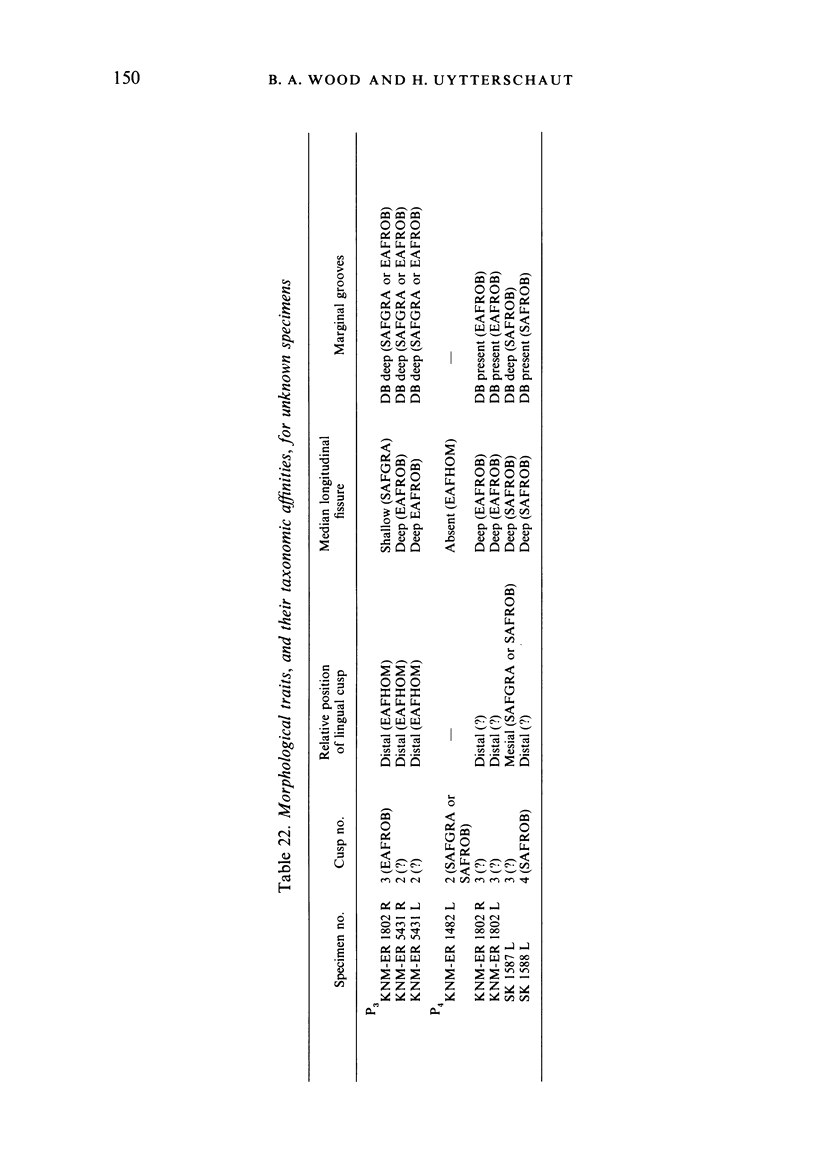
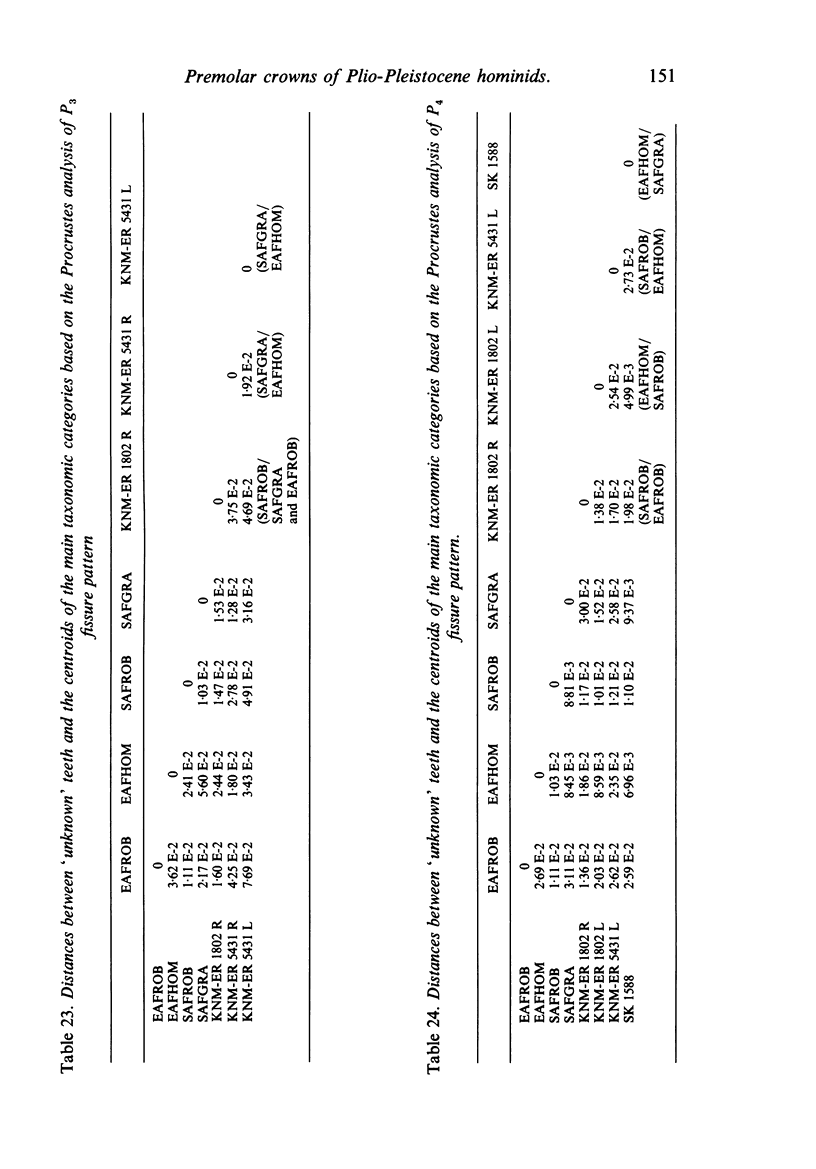
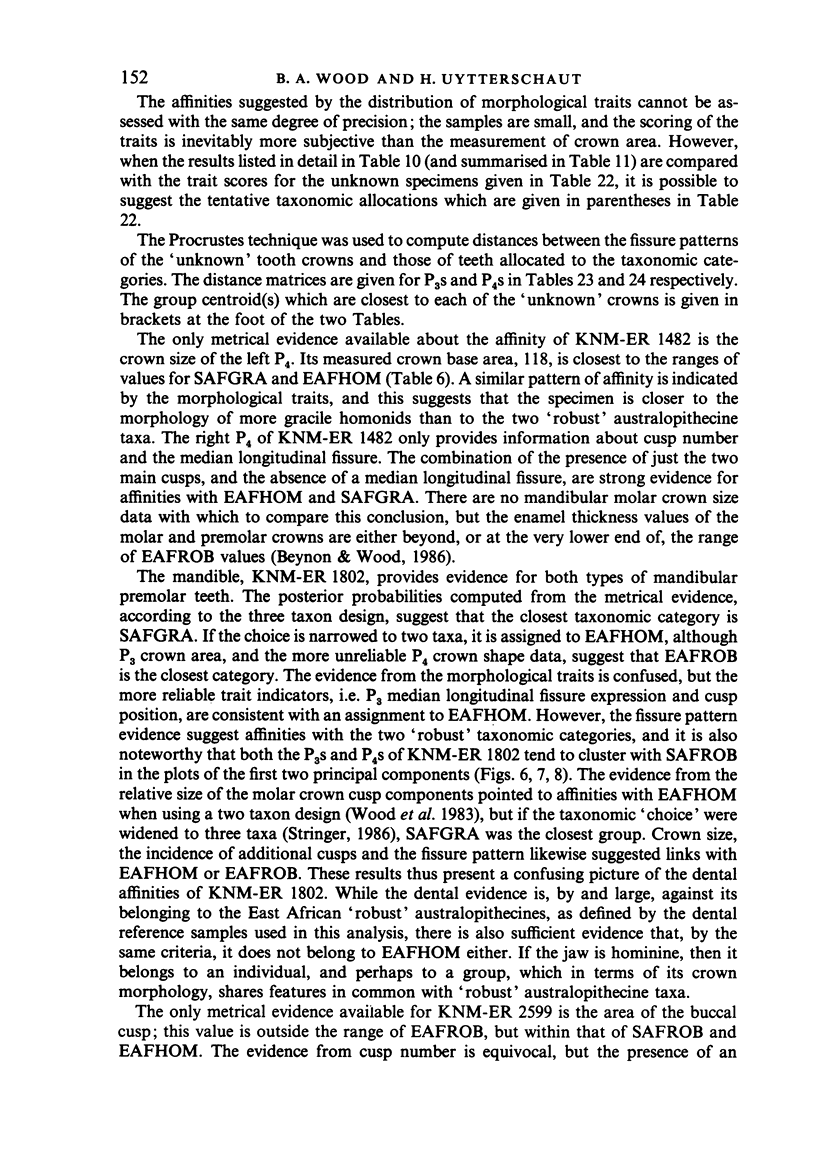
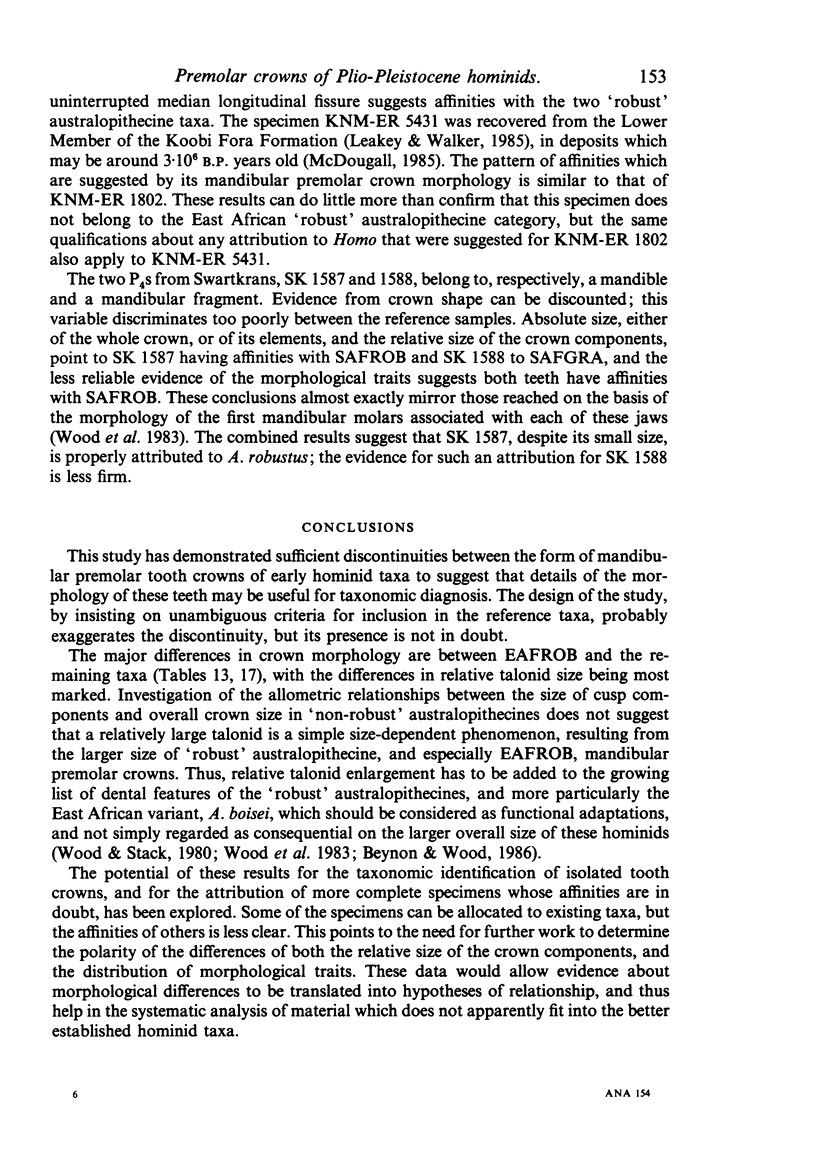
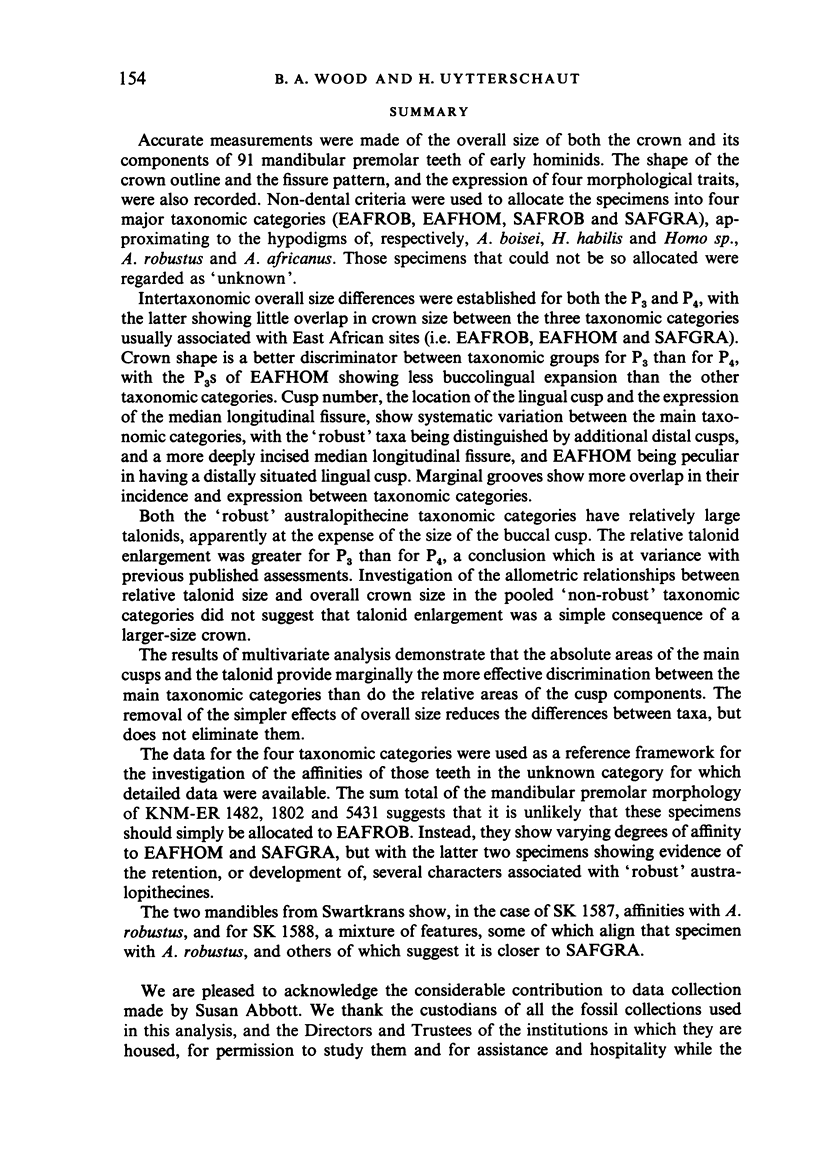
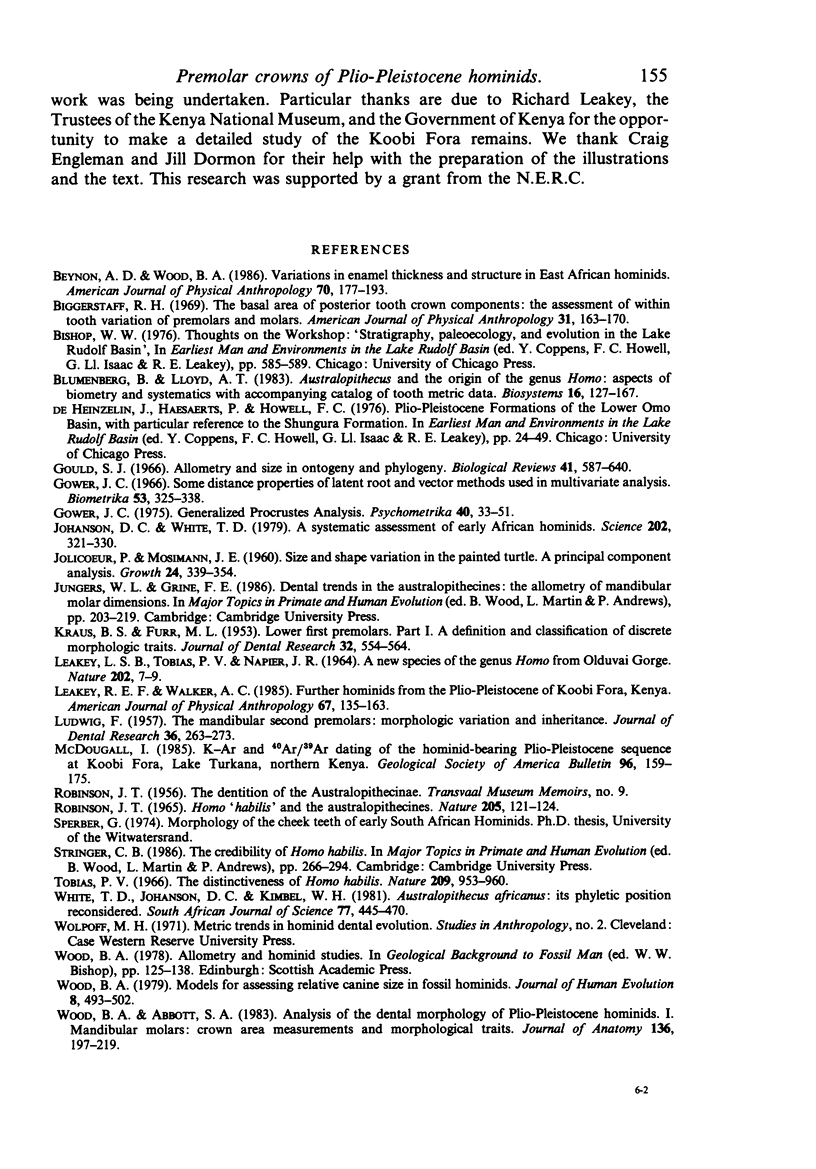

Selected References
These references are in PubMed. This may not be the complete list of references from this article.
- Beynon A. D., Wood B. A. Variations in enamel thickness and structure in East African hominids. Am J Phys Anthropol. 1986 Jun;70(2):177–193. doi: 10.1002/ajpa.1330700205. [DOI] [PubMed] [Google Scholar]
- Biggerstaff R. H. The basal area of posterior tooth crown components: the assessment of within tooth variations of premolars and molars. Am J Phys Anthropol. 1969 Sep;31(2):163–170. doi: 10.1002/ajpa.1330310204. [DOI] [PubMed] [Google Scholar]
- Blumenberg B., Lloyd A. T. Australopithecus and the origin of the genus Homo: aspects of biometry and systematics with accompanying catalog of tooth metric data. Biosystems. 1983;16(2):127–167. doi: 10.1016/0303-2647(83)90033-3. [DOI] [PubMed] [Google Scholar]
- Gould S. J. Allometry and size in ontogeny and phylogeny. Biol Rev Camb Philos Soc. 1966 Nov;41(4):587–640. doi: 10.1111/j.1469-185x.1966.tb01624.x. [DOI] [PubMed] [Google Scholar]
- JOLICOEUR P., MOSIMANN J. E. Size and shape variation in the painted turtle. A principal component analysis. Growth. 1960 Dec;24:339–354. [PubMed] [Google Scholar]
- Johanson D. C., White T. D. A systematic assessment of early African hominids. Science. 1979 Jan 26;203(4378):321–330. doi: 10.1126/science.104384. [DOI] [PubMed] [Google Scholar]
- KRAUS B. S., FURR M. L. Lower first premolars. I. A definition and classification of discrete morphologic traits. J Dent Res. 1953 Aug;32(4):554–564. doi: 10.1177/00220345530320041701. [DOI] [PubMed] [Google Scholar]
- LEAKEY L. S., TOBIAS P. V., NAPIER J. R. A NEW SPECIES OF THE GENUS HOMO FROM OLDUVAI GORGE. Nature. 1964 Apr 4;202:7–9. doi: 10.1038/202007a0. [DOI] [PubMed] [Google Scholar]
- LUDWIG F. J. The mandibular second premolars: morphologic variation and inheritance. J Dent Res. 1957 Apr;36(2):263–273. doi: 10.1177/00220345570360021701. [DOI] [PubMed] [Google Scholar]
- Leakey R. E., Walker A. C. Further hominids from the Plio-Pleistocene of Koobi Fora, Kenya. Am J Phys Anthropol. 1985 Jun;67(2):135–163. doi: 10.1002/ajpa.1330670209. [DOI] [PubMed] [Google Scholar]
- Tobias P. V. The distinctiveness of Homo habilis. Nature. 1966 Mar 5;209(5027):953–957. doi: 10.1038/209953a0. [DOI] [PubMed] [Google Scholar]
- Wood B. A., Abbott S. A. Analysis of the dental morphology of Plio-pleistocene hominids. I. Mandibular molars: crown area measurements and morphological traits. J Anat. 1983 Jan;136(Pt 1):197–219. [PMC free article] [PubMed] [Google Scholar]
- Wood B. A., Abbott S. A., Graham S. H. Analysis of the dental morphology of Plio-Pleistocene hominids. II. Mandibular molars--study of cusp areas, fissure pattern and cross sectional shape of the crown. J Anat. 1983 Sep;137(Pt 2):287–314. [PMC free article] [PubMed] [Google Scholar]
- Wood B. A., Van Noten F. L. Preliminary observations on the BK 8518 mandible from Baringo, Kenya. Am J Phys Anthropol. 1986 Jan;69(1):117–127. doi: 10.1002/ajpa.1330690113. [DOI] [PubMed] [Google Scholar]


